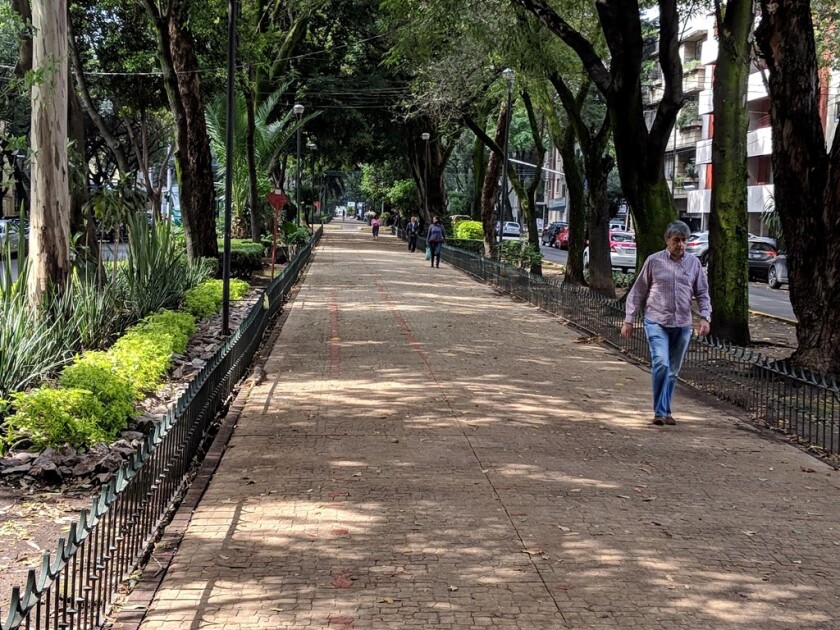For instance, Mexico City has devoted new road space to mass transit. The city’s bus rapid transit (BRT) system is the world’s seventh-busiest BRT network. It carries more than a million daily riders along seven routes, causing a mode shift in the region. The majority of Metrobus riders previously drove.
The city’s BRT system (which was recently expanded) works because it has right-of-way carve-outs. Along with dedicated lanes, the rider benefits from elevated platforms, allowing prepayment and level boarding with buses. This improves accessibility and speeds up boarding. It provides a more pleasant waiting experience than is the case at most U.S. bus stops, and again, is possible because the city was willing to take lanes from solo drivers.
While BRT has become somewhat popular in the U.S., it is often compromised by the car lobby. Urbanists describe a phenomenon called “BRT creep” – designating highway lanes for buses but leaving them as general-purpose high-occupancy lanes. Mexico City, by contrast, has lanes that are reserved exclusively for Metrobus and the occasional ambulance.
Another of the city’s alternative right-of-way carve-outs has been for “parklets.” These are structures placed on curbs that serve as an extension of the sidewalk. They commonly host restaurant seating. While they became increasingly popular in the U.S as restaurants needed outdoor seating during COVID-19, in Mexico City they are the defining feature of certain areas. They fit particularly well there because the city has lots of small-footprint businesses with no indoor seating. One parklet lets them seat dozens of customers in an attractive setting.

The city abolished minimum parking requirements in 2017, causing developers to build 50 percent less parking, and likely reducing car ownership. It has funded multiple modes of transit and allows a private bus network (peseros) that makes car ownership less necessary. This particular step is more granular; the city has allowed alternative uses on a block-by-block basis, often in cooperation with private interests that see benefit in more attractive streets.
Granted, some of these measures apply mostly to a few upscale neighborhoods, while cars dominate the landscape elsewhere in Mexico City. But the results from these neighborhoods (which include Condesa, Roma and Polanco) show what is possible from better right-of-way usage. All three areas have become international destinations.
Many city officials in the U.S. express a desire to replicate moves like this, but it hasn’t happened. Fundamentally, this is from opposition to loss of parking and fears of real or perceived difficulty in driving convenience. But the result is that there are few, if any, urban American neighborhoods that match the placemaking or transit richness of the best ones in Mexico City. If U.S. cities want such results, they must stand up to the car lobby and make similar right-of-way changes.

Governing's opinion columns reflect the views of their authors and not necessarily those of Governing's editors or management.











